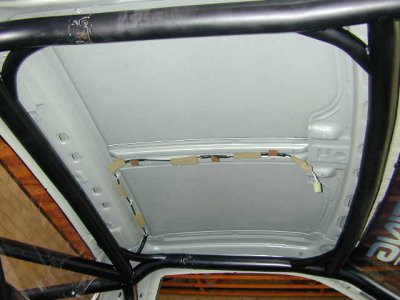There are a lot of things you
can do... but it depends on how serious you are, how much money you want to spend, etc.
As a general rule, I would suggest you get the car first, and see how you like it. There's very little that you
must do to change it before taking it onto the track. You should try it out stock, and then decide, item by item, where you want to consider changing anything. There's no need to spend beaucoup bucks right from the start; an incremental approach will minimize any expenditures that may very well be unnecessary for your needs.
For example:
atspeed said:
1) safety mods - roll bars, attachment of harnesses, clearence for helmet, fire extinguisher mounting, racing seats, etc.
You can do all of that if you want - or, none of it. There are roll bars and harness brackets and racing seats available. Or, if you are only contemplating a few HPDE events, this may be overkill. Full roll cage and racing seats makes a great track car but also makes the car very impractical as a daily driver.
Clearance for a helmet is greater in the coupes. If you're average height, clearance is not a problem. If you're too tall, you might want to consider a seating mod that removes the bottom seat cushion.
atspeed said:
2) Neccessary suspension and brake mods
On suspension, nothing is a "must have". I suggest you try the car out with the stock suspension first, and see how you like it. You may like it fine; the stock suspension is a nice compromise between road-holding on the track, and comfort on the street. On older cars, the shocks may need replacement. If you are willing to live with a firmer ride, there are the usual shocks, anti-sway bars, and such available.
On brakes, too, the stock setup is a lot better than some people give it credit for. You may find that the stock setup is just fine. As a first step, you might try aftermarket pads and/or rotors (although the stock ones are actually quite good too). Most major brands of pads are available for the NSX, so if you are willing to swap pads for each track event, you can get track-specific compounds.
Yes, there are big brake kits available, but there are also several advantages to using the stock calipers and I would suggest using them first, because you might not need to spend the $$$$$$$$$$ for a big brake kit. In addition to generally excellent performance, the stock calipers also let you use the 15" and 16" OEM wheels (as well as your spare tire), at least for track use. The smaller wheels have some distinct advantages: they are light; there are lots of R compound tires available in the OEM sizes; the tires are cheap; extra sets of wheels are cheap (typically changing hands for $100-200); and you can fit a set of four wheels and tires inside the car to take them to the track with you.
atspeed said:
3) wheel and tire combos without need for body work.
Stock wheels are great. You can get the sticky OEM tires for the street, and for the track you can use those, or get R compound tires in the '91-93 OEM sizes, and fit them in the car.
atspeed said:
4) Advice on best vintage for tracking
As supercharged mentioned, the coupes are better for tracking, due to their lighter weight and greater rigidity. '91-94 NSX are all coupes and relatively inexpensive. The '99 Zanardi NSX is more expensive but excellent. Other '96-01 coupes are extremely rare and hard to find.






